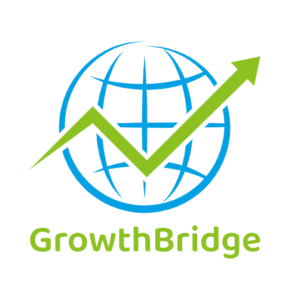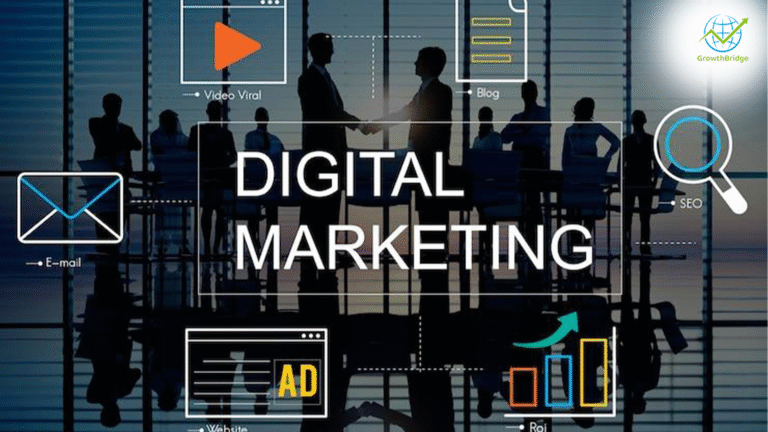- Posted On April 11, 2025
CRO Digital Marketing Strategies That Will Drive Results for Your Business
What is CRO Digital Marketing?
Conversion Rate Optimization – CRO digital marketing is the process of optimizing a site or campaign to achieve more from current visitors. Desired actions can be a purchase, newsletter sign-up, form completion, or a button click that takes them to the next step. Other marketing strategies focus on acquiring new visitors, whereas CRO focuses on maximizing the use of the visitors already there.
Why is CRO Digital Marketing so Important?
CRO Digital Marketing is important because it determines whether or not online businesses will succeed. And why is that?
Enhances return on investment: Rather than investing additional money in advertising, conversion rate optimization enables organizations to derive more value from their current audience.
Increases User Experience: Better websites make navigation easier, thus giving customers satisfaction.
Increases Customer Insights: Conversion analysis informs companies about customer behavior and decisions.
Drives Revenue: Even a small percentage point increase in conversion rate can drive huge revenue growth.
How Digital Marketing CRO Works
CRO digital marketing is an ongoing process of analyzing human behavior, experimenting with alternative approaches, and using data to inform improvement. Its core steps are:
1. Collecting and Evaluating Information:
It begins with data collection and analysis. Companies use Google Analytics, Hotjar, or Crazy Egg to measure visitor behavior. Analysis plays a major role in determining the pages that have a high exit rate or do not convert, thereby suggesting areas for improvement.
2. Pain Point Identification:
Companies prefer to identify pain points by collecting user feedback in the form of surveys or direct interaction. Heatmaps and session recordings are also utilized to track where users lose interest or encounter problems on the site.
3. Experimentation and A/B Testing:
After trouble spots have been identified, A/B testing and experimentation enter the picture. Versions of a web page are pitted against each other to see which one results in more conversions. This can be trying out various headlines, call-to-action buttons, images, or designs to see what best satisfies the user.
4. Optimization and Implementation:
After collecting the results of testing, companies move on to the optimization and implementation stage. They fine-tune based on what they have learned, and they keep monitoring the way things function to fine-tune their process. The process does not culminate in a single change—it needs regular upgrading to maintain long-term success.
Most Significant CRO Digital Marketing Strategies
To maximize conversion rates, businesses may utilize the following:
1. Enhance Website Speed and Performance
Slow-loading websites causes visitors to leave, and optimizing images, compressing files to make them smaller, and employing caching techniques can do wonders. Content Delivery Networks (CDNs) increase load speeds by distributing site data across numerous servers. Minimizing HTTP requests and enabling browser caching also create a good user experience.
2. Make CTAs Clear and Appealing
Users should quickly understand what to do next. Trying different colors, sizes, and styles can help determine what will work best.
3. Streamline Landing Pages
Landing page optimization is necessary to gain more conversions. A simple design with a concise message serves to maintain the focus of visitors. Incorporating features such as testimonials and social proof makes the website more credible and convinces visitors of their action choices.
4. Personalize User Experience
It can highly increase engagement to tailor the user experience. Machine learning and artificial intelligence functionality enable companies to tailor recommendations, promotions, and content based on how users behave. Altering content that reacts to what individuals look for increases interactions to become more effective and beneficial.
5. Leverage Social Proof and Trust Signals
Customer reviews, ratings, and case studies help potential customers feel assured about their choices. Trust badges and security seals ensure users that they are secure with their data, and therefore they are more likely to buy.
6. Reduce Form Fields and Simplify Checkout Process
Asking for only the required details avoids frustration, and allowing a guest checkout facility accelerates transactions. Providing diverse payment options helps users make their purchases, too.
7. Use Exit-Intent Popups
When users attempt to exit the page, companies can provide exclusive offers or promotions to retain them on board. Alternatively, provide a basic subscription link to keep them interested for future contact.
8. Execute Retargeting Tactics
Companies can use cookies and tracking pixels to display ads that match what users enjoyed previously. Sending follow-up messages with exclusive offers also assists in restoring lost customers and getting them back.
Positive and Negative Traits of CRO Digital Marketing
Advantages
- Higher Conversion Rates – CRO is more efficient at converting site visitors into customers. Instead of driving more traffic, it seeks to make existing traffic do something, like buy a product or sign up for a service.
- Enhanced User Experience – An optimized website is easier to navigate. CRO improves website design, navigation, and speed, making it a pleasurable experience for users to surf and act upon.
- Cost-Effective – Rather than pouring more money into ads to drive new traffic, CRO makes you derive greater value from the traffic you already have. This means that you can accomplish more without needing to raise your marketing budget.
- Data-Driven Decisions – CRO is not about guesswork but based on actual data about how customers act. Companies can experiment and quantify different approaches to identify what is most effective, thus streamlining marketing decisions.
- Enhanced Customer Trust – A very optimized website will usually have trust indicators like reviews, testimonials, and security badges. This builds confidence and credibility and makes the customer feel more at ease with the purchase.
Disadvantages
- Time-Consuming – CRO is no magic solution. It entails continuous testing, analyzing, and adjusting strategies to enhance conversion rates in the long term.
- Technical Challenges – Certain CRO digital marketing strategies include coding, A/B testing, and site optimization, which could involve expert technical skills or the hiring of specialists.
- No Instant Results – Unlike paid advertising, CRO takes time to produce improved results. It is a long-term strategy, and companies have to be patient to notice significant conversion rate changes.
- Risk of Over-Optimization – Attempting too many alterations that are meant to drive conversions might have the reverse effect. Altering a site too much might confuse or infuriate visitors, leading to less conversion rather than more.
Best Practices for CRO Digital Marketing Implementation
Implementing CRO digital marketing effectively requires a strategic approach that balances data-driven insights with user-centric enhancements. Here are some best practices to follow:
- Keep on doing A/B testing regularly to find the best strategies.
- Maintaining user experience is the top priority during optimization efforts.
- Continuously track performance measures to fine-tune strategies.
- Synchronize CRO tactics with company-wide business objectives.
- Stay connected with the new digital marketing tools and trends.
Conclusion
CRO digital marketing is an important plan for businesses that aim to increase their online success. By optimizing website performance, improving user experience, and testing different conversion strategies, companies are able to achieve massive growth.
Applying the proper CRO digital marketing strategies ensures every visitor has a higher chance of becoming a customer. For excellent tips on how to maximize your conversion rates, visit GrowthBridge Consulting today.








